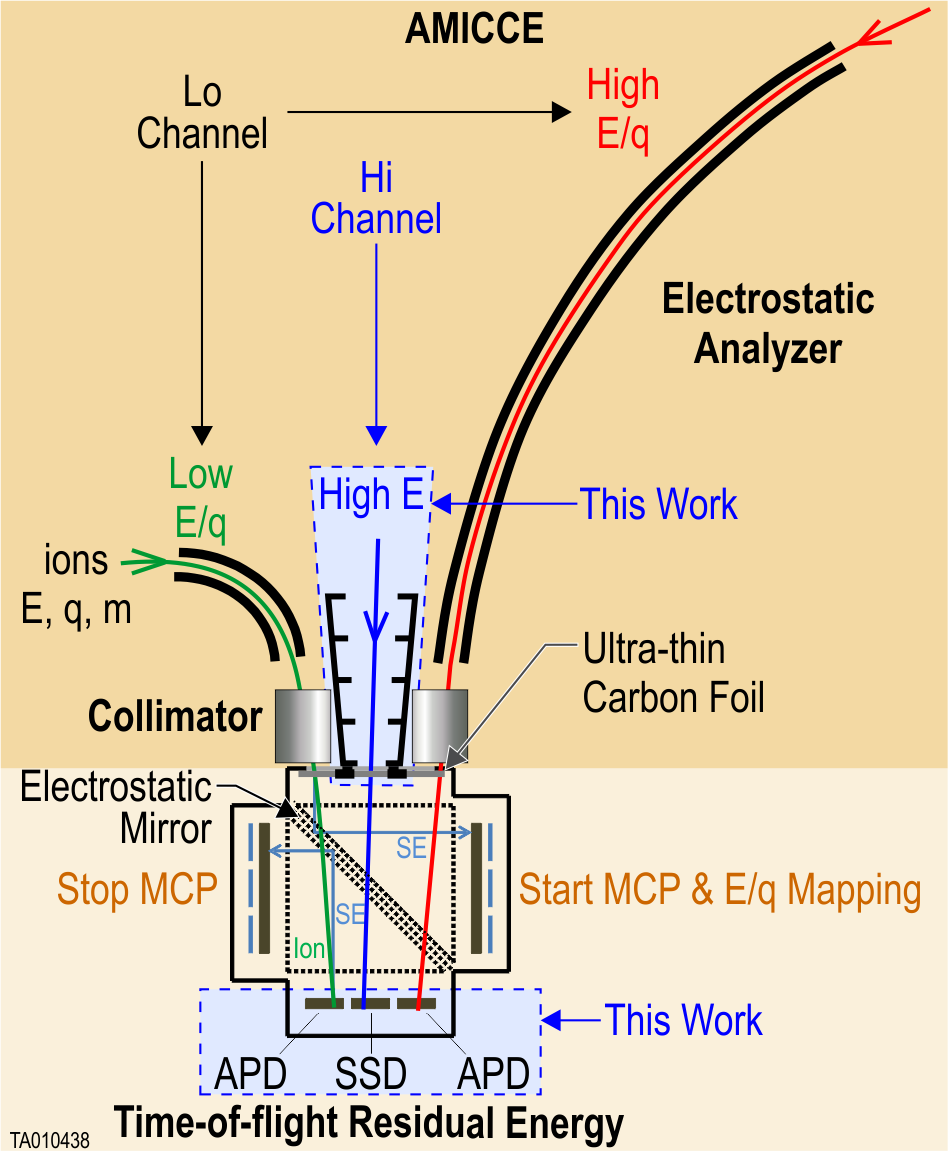The Advanced Mass, Ionic, and Charge Composition Experiment (AMICCE) is an innovative concept using an electrostatic analyzer (ESA) with variable radius of curvature that increases sensitivity of a suprathermal ion instrument (Allegrini et al. 2009, Rev. Sci. Instrum.; Allegrini et al. 2016, J. Geophys. Res.). The Advanced Mass and Ionic Charge Composition Experiment (AMICCE) combines this ESA with a proven design for measuring time-of- flight (TOF) and residual energy (E) to uniquely determine elemental, isotopic, and ionic charge composition over a wide energy range. AMICCE will measure ionic charge states of heavy ions (He-Fe; 10-500 keV/q) with resolution of ∆q/q≤0.2. The ESA uses only four voltage steps to cover the entire E/q range, decreasing duty cycle and yielding nearly 10x sensitivity gain over current suprathermal ion instruments. AMICCE has mass resolution ∆m/m≤0.15 to separate rare isotopes like 3He from the more abundant 4He.
We are working on an enhancement of AMICCE’s capabilities with a high energy channel, using its original TOF section to measure isotopic and elemental composition of ions from ~0.1–5 MeV/nucleon. The new TOF-E design combines two channels: 1) “Lo” for suprathermal ions (described above) and 2) “Hi” for energetic particles entering the TOF-E section through a collimator and C-foil. The TOF design uses electrostatic mirroring of secondary electrons emitted from thin C-foils or Si detectors. The Lo and Hi channels share the same start and stop MCP detectors. Ion residual energy is measured with avalanche photodiodes (Lo) and SSDs (Hi), enabling simultaneous measurement of 1) ionic charge state, isotopic, and elemental composition of the largely unexplored suprathermal ions and 2) isotopic and elemental composition of heliospheric energetic ions.
AMICCE promises to improve performance of an existing instrument concept by combining the Lo and Hi channels into a single detector section, saving mass and power, and providing higher sensitivity than present instruments in a similar energy range.


